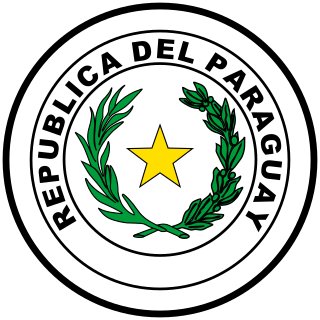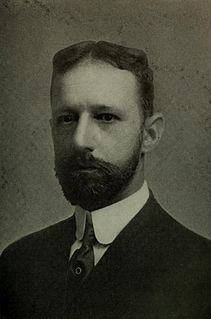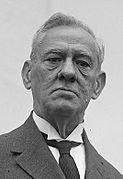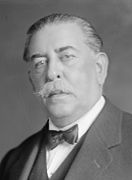The Democratic Party is a center-right party in Bulgaria led by Alexander Pramatarski. The party is a member of the European People's Party (EPP).

Parliamentary elections were held in Greece on 31 March 1946. The result was a victory for the United Alignment of Nationalists, an alliance that included the People's Party, the National Liberal Party, the Reform Party, which won 206 of the 354 seats in Parliament. As a result Konstantinos Tsaldaris became Prime Minister leading a right-wing coalition. Nonetheless, he soon decided to resign in favor of Themistoklis Sophoulis, who led a government of national unity during the entire second phase of the civil war (1946–1949). One of the priorities of the new government was the proclamation of a plebiscite for the restoration of the Greek monarchy.
The Cuban Revolutionary Party – Authentic, commonly named Authentic Party, was a political party in Cuba most active between 1933 and 1952. Although the Partido Auténtico had significant influence, it eventually became unpopular and, despite significant reforms, Fulgencio Batista returned to power.

Parliamentary elections were held in Norway on 17 October 1927. The result was a victory for the Labour Party, which won 59 of the 150 seats in the Storting.

General elections were held in Guatemala on 19 January 1958 after the 1957 elections were nullified. After no candidate received 50% or more of the national vote, Miguel Ydígoras Fuentes was elected President by Congress on 12 February, whilst an alliance of the National Democratic Reconciliation Party, Nationalist Democratic Party, the Nationalist Liberal Party, the Democratic National Association and the National Anti-Communist Front won 40 of the 66 seats in Congress.

General elections were held in Nicaragua on 20 October 1996. Arnoldo Alemán of the Liberal Alliance was elected President, with the Liberal Alliance also winning 42 of the 93 seats in the National Assembly.

General elections were held in Paraguay on 10 May 1998. The presidential elections were won by Raúl Cubas Grau of the Colorado Party, who received 55.3% of the vote. In the Congressional elections, the Colorado Party won 45 of the 80 seats in the Chamber of Deputies and 24 of the 45 seats in the Senate, defeating the Democratic Alliance formed by the Authentic Radical Liberal Party and the National Encounter Party. Voter turnout was 80.5%.

General elections were held in Cuba on 10 January 1936. Miguel Mariano Gómez of the Tripartite Coalition won the presidential election, whilst the Coalition also emerged as the largest party in the House of Representatives. Voter turnout was 67.1%.

General elections were held in Cuba on 1 November 1954. Fulgencio Batista won the presidential election running under the National Progressive Coalition banner, whilst the main opposition candidate, Ramón Grau San Martín, withdrew his candidacy before election day. Progressive Action Party emerged as the largest party in the House of Representatives, winning 60 of the 130 seats. Voter turnout was 52.4%.

General elections were held in Cuba on 14 November 1908. José Miguel Gómez won the presidential election running under the Liberal Coalition banner, whilst the coalition emerged as the largest faction in the House of Representatives, winning 49 of the 83 seats. Voter turnout was 71.0%.

General elections were held in Cuba on 1 November 1912. Mario García Menocal won the presidential election running under the Conjunción Patriótica banner, whilst the alliance also emerged as the largest faction in the House of Representatives, winning 26 of the 50 seats.

Parliamentary elections were held in Cuba on 1 June 1950. The Partido Auténtico-Democratic Party-Liberal Party alliance won 42 of the 66 seats. It was the last free election held in Cuba on a national level.

General elections were held in Suriname on 19 November 1973. The result was a victory for the National Party Combination, which won 22 of the 39 seats. Voter turnout was 76.1%.

Parliamentary elections were held in Bulgaria on 4 September 1911. The result was a victory for the People's Party-Progressive Liberal Party alliance, which won 190 of the 213 seats. Voter turnout was 47.2%.

General elections were held in Romania in June 1931. The Chamber of Deputies was elected on 1 June, whilst the Senate was elected in three stages on 4, 6 and 8 June. The result was a victory for the governing National Union, an alliance of the National Party, the National Liberal Party, the German Party, the Agrarian Union Party, the Vlad Ţepeş League, the Agrarian League and several other parties. The Union won 289 of the 387 seats in the Chamber of Deputies and 108 of the 113 seats in the Senate elected through universal vote. The five seats won by the Communist-dominated Peasant Workers' Bloc were ultimately invalidated by the new Parliament.

General elections were held in Romania in July 1932. The Chamber of Deputies was elected on 17 July, whilst the Senate was elected in three stages on 20, 24 and 26 July. The result was a victory for the National Peasants' Party-German Party alliance, which won 274 of the 387 seats in the Chamber of Deputies and 104 of the 113 seats in the Senate elected through universal male vote. Of the 274 Chamber seats, 265 were taken by the National Peasant's Party and nine by the German Party.

The Liberal Party, also known as the Radoslavists was a political party in Bulgaria from 1887 until 1920.
The People's Party was a political party in Bulgaria between 1894 and 1920.

The Agrarian Union Party was a political party in Romania.


















